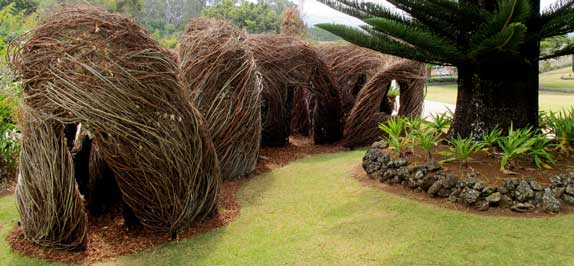In the spring of 2009, Angela Kepler found a diseased banana plant on her neighbor’s property. “It really freaked us…
Read More
2011
Plans in the Pipeline to Protect ‘Ōhi‘a From ‘Rust’
It starts with a spot, a tiny dot of orange on a leaf bound for Hawai‘i. It could be on…
Read More
Positive spin on invasive species by artists, chefs
One day I was pulling a weed and I realized there was a little grain of hostility there toward this…
Read More



